Bob’s Chimney
Chimney Repointing & Tuckpointing Services
Is your chimney’s masonry or brick damaged, with missing sections at various spots? Let us replace your old mortar with a fresh one, making your chimney efficient, strong, and structurally consistent again.

Professional and Reliable Fireplace Chimney Tuckpointing
A chimney’s structural integrity depends on the strength of its masonry or brickwork. Whether there are small cracks in the masonry or extensive damage at different sections, addressing repairs quickly is an important step towards preventing chimney fires, chimney leaks, or other issues from taking place. It’s also essential for maintaining proper heat efficiency in the chimney and ensuring your heating devices work properly.
At Bob’s Chimney, we provide professional chimney tuckpointing and repointing services in your area. We use proper tools to match the new mortar with your existing mortar, creating a smooth, seamless finish that blends perfectly with the chimney system. The result is a properly sealed chimney that is structurally strong while looking as good as new.
Does your chimney fill up your room with smoke every time you try to use the fireplace? It may be because of spalling bricks. Call us if you need help repointing fireplaces in your property.
Should You Go for DIY Tuckpointing or Professional Tuckpointing Services?
A lot of homeowners try to save cost by going for DIY chimney repointing projects, but DIY methods rarely address the root cause of masonry damage unless the person has professional experience in dealing with chimneys. In some cases, it can even make the damage worse if the person uses the incorrect mortar mix or doesn’t apply it properly. This often leads to increased tuckpointing costs down the line, as you’d have to hire technicians to redo the entire project.
We highly recommend going for professional chimney tuckpointing or repointing services by a company like Bob’s Chimney. A chimney expert knows how to work in tight spaces, sloped roofs and large chimneys. Skilled in diverse forms of masonry work, they use industry-approved techniques to make your chimney weather-resistant, durable, and even. While it may cost more upfront, it helps you avoid higher costs in the future.


Basic Steps in Our Chimney Repointing & Tuckpointing Process
01
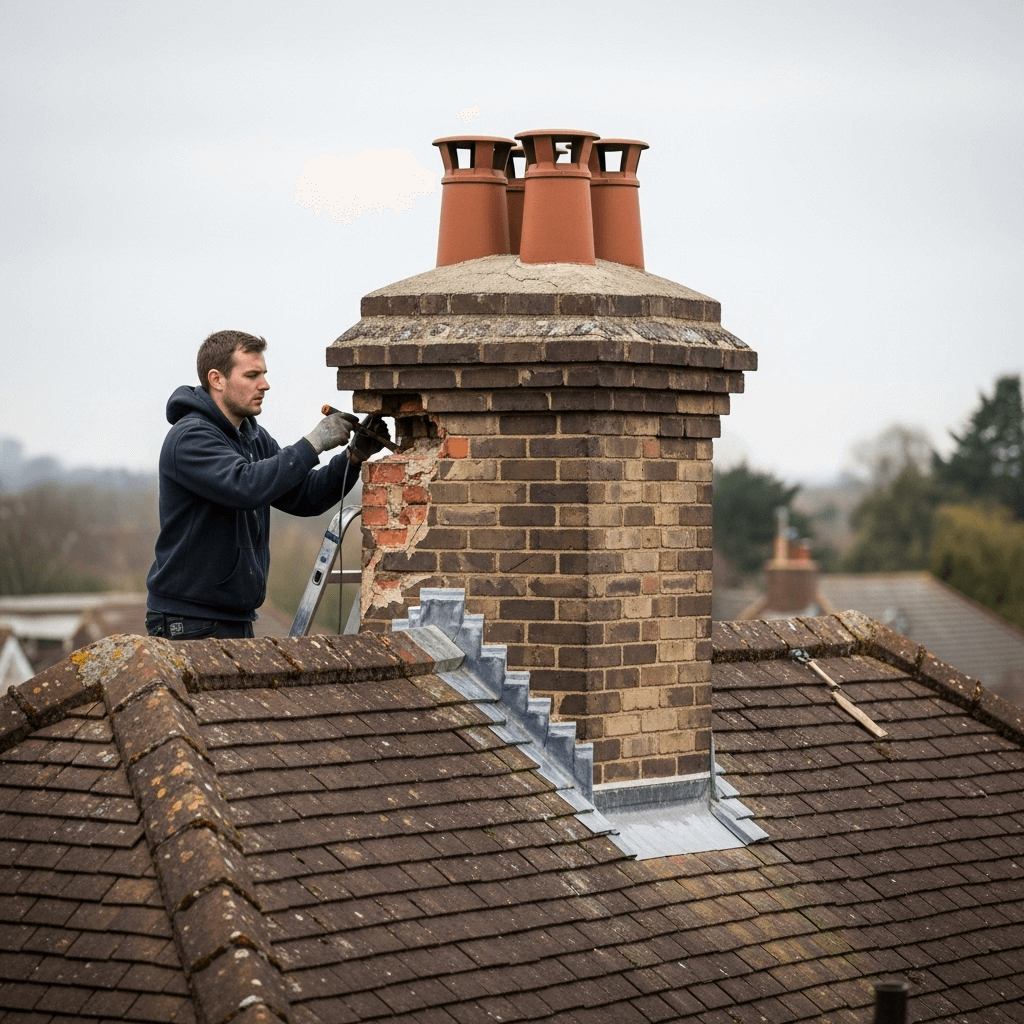
Chimney Inspection
Our restorative process begins with an inspection of your chimney system. We check any areas with excess water penetration, spalling bricks, and efflorescence.
02
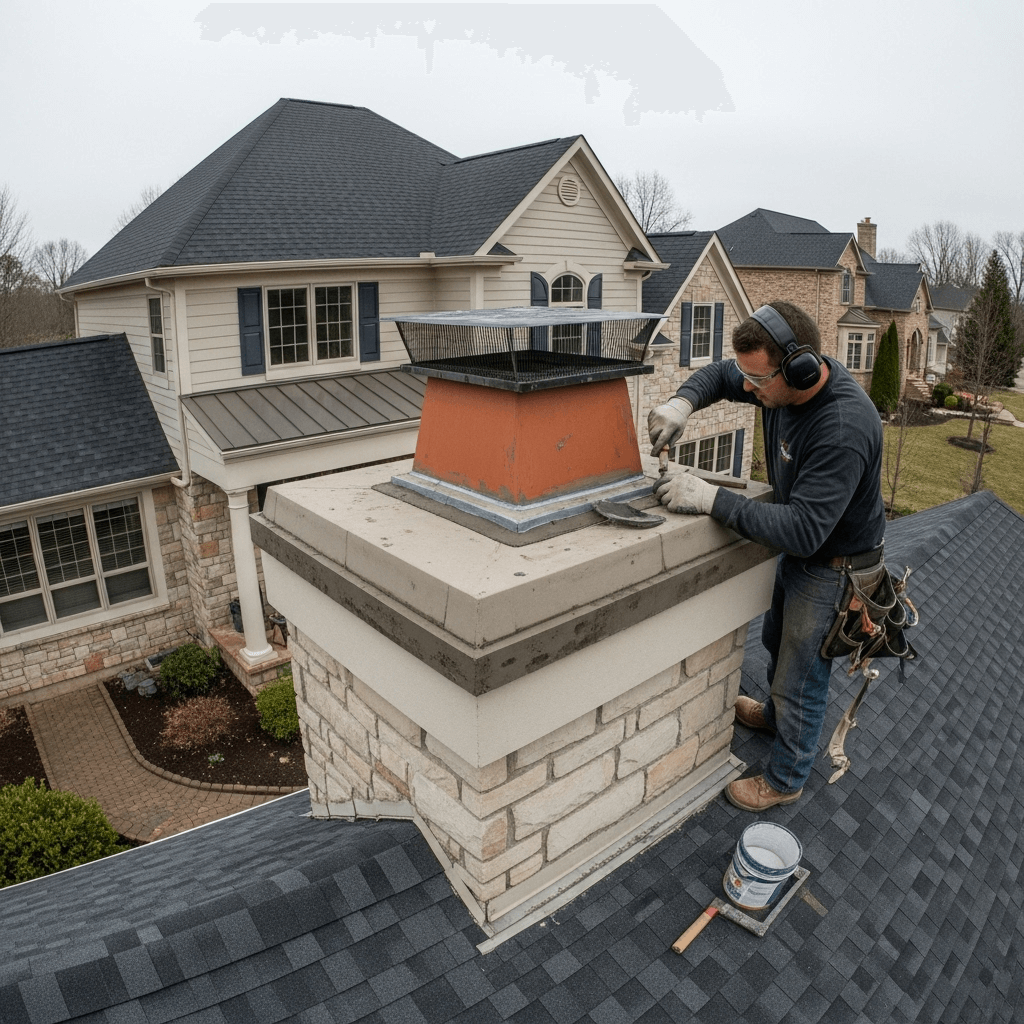
Removing Damaged Mortar
We use a combination of tools to remove the damaged parts in the mortar, like grinders, pointing trowels, and chisels. This helps us prep the surface first.
03
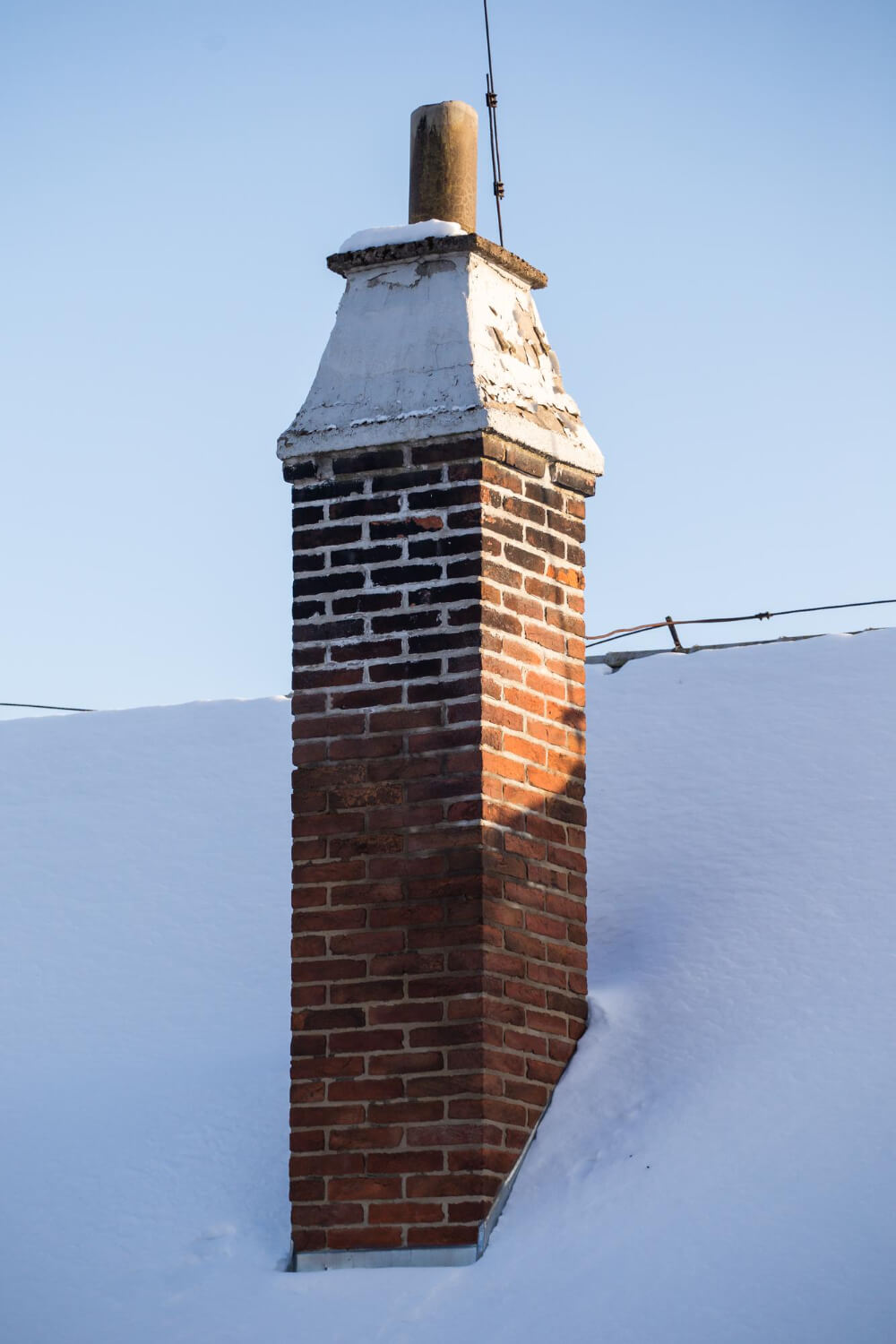
Cleaning Mortar Joints
Once we have removed the problem areas in the masonry, we proceed with cleaning. This is an important step in ensuring the new mortar adheres to the surface well.
04
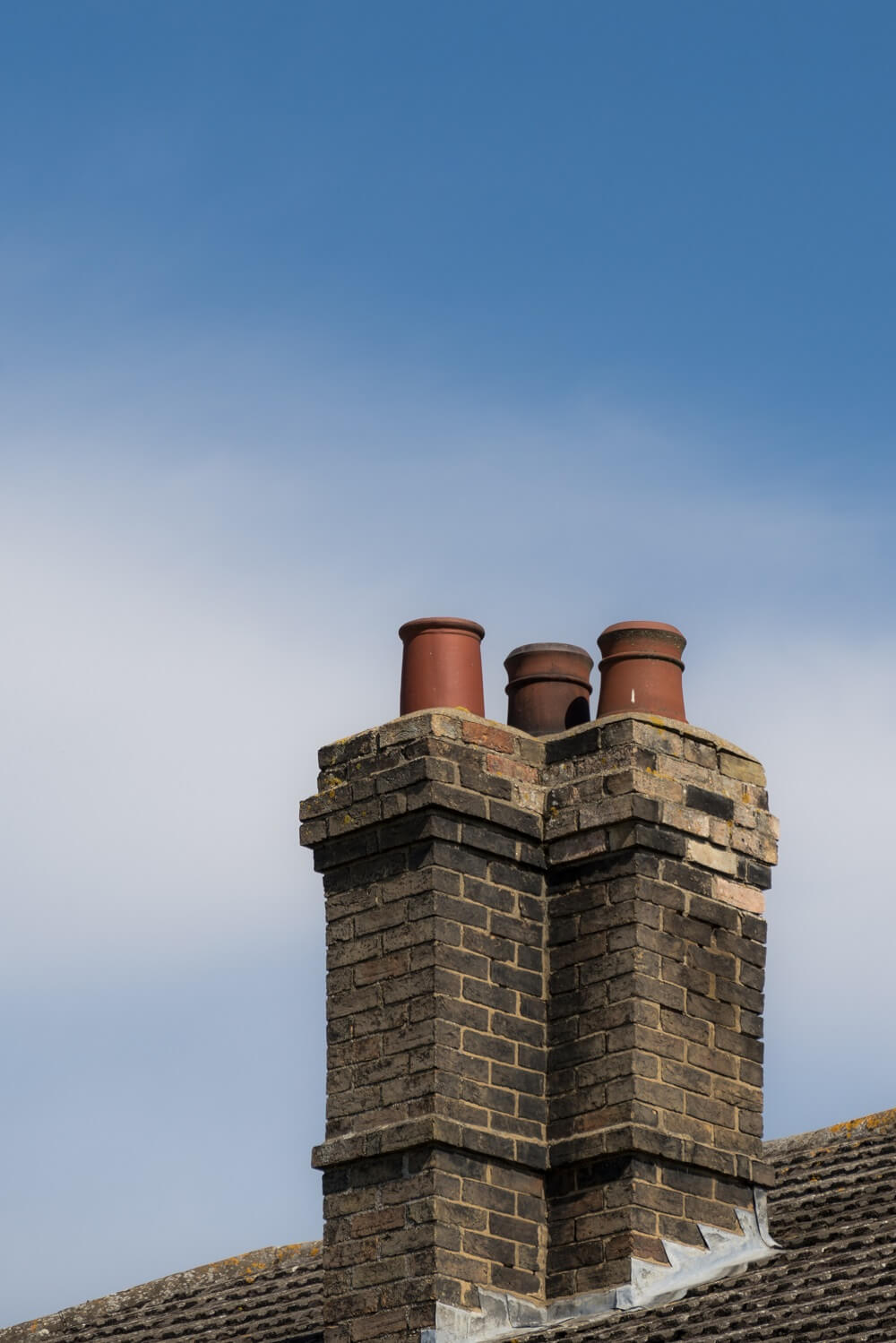
Chimney Repair
Before applying the new mortar, it’s essential to fix any chimney problems that caused the bricks to go bad in the first place. We ensure your chimney is structurally sound.
05
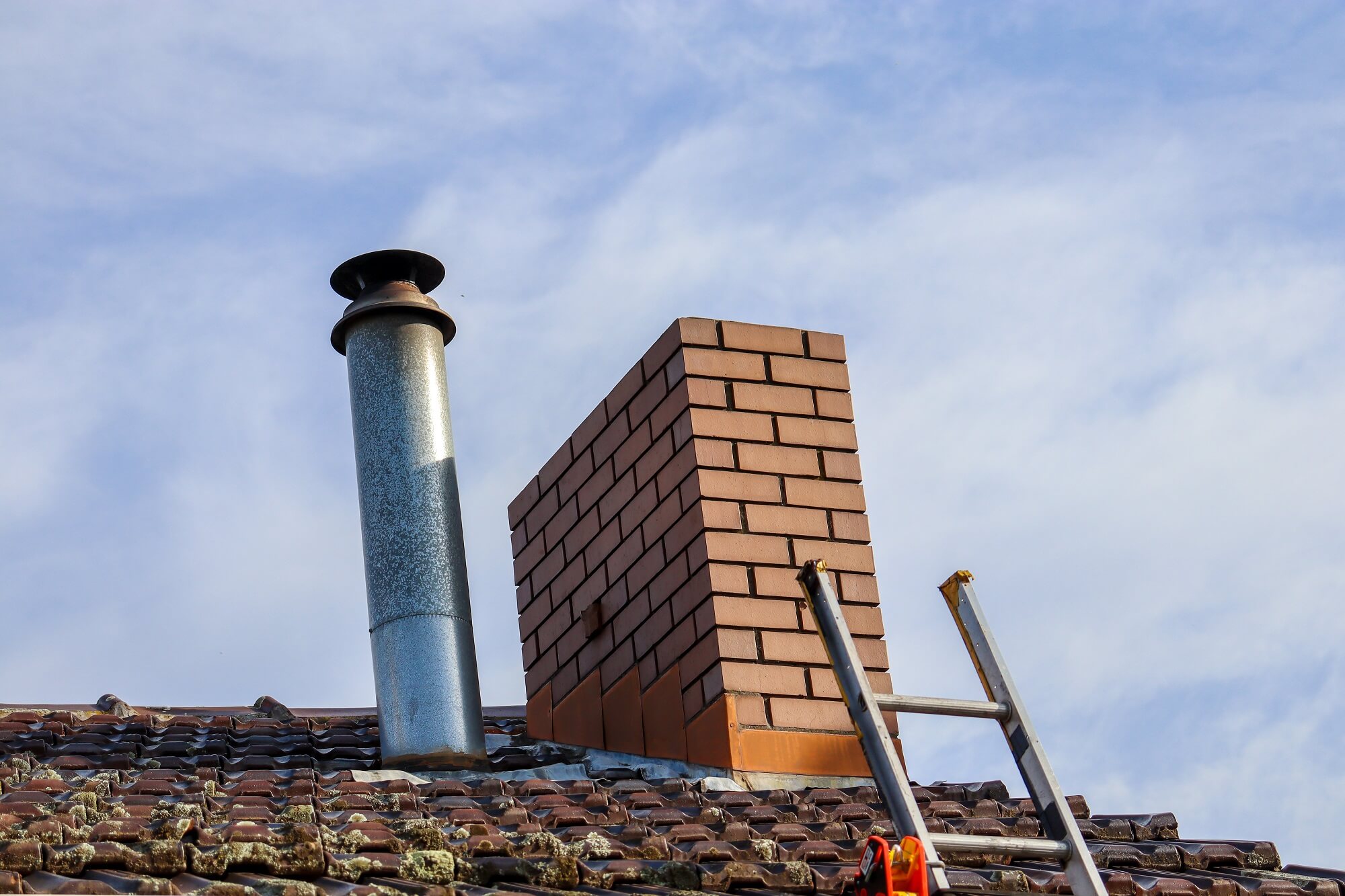
Applying New Mortar
We select the new mortar by color matching it properly according to your existing mortar. This helps us create a sense of visual uniformity in the tuckpointed chimney.
06
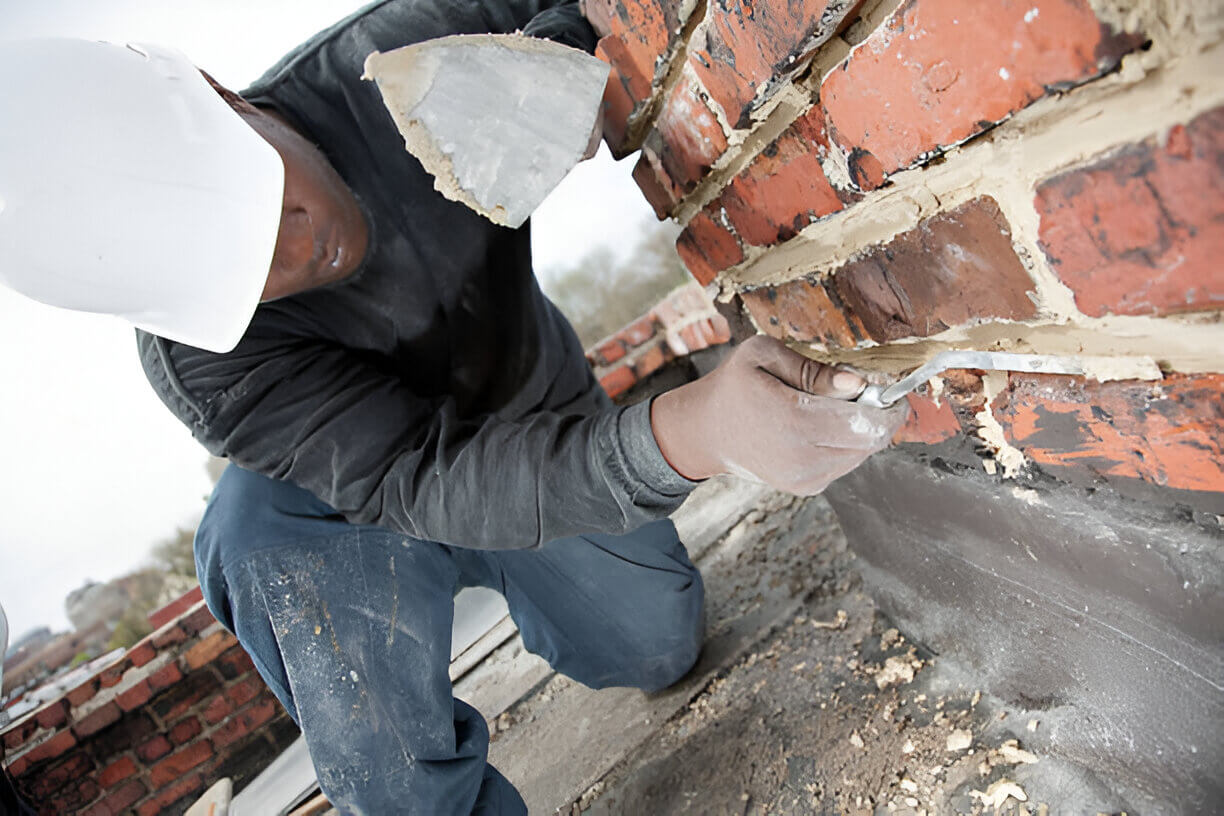
Finishing The Joints
We make the finishing touches and perform a final chimney inspection to see if the chimney is functioning well. Any last-minute repairs are addressed accordingly.
Repointing a chimney prevents problems like moisture intrusion, water damage, mold damage, and chimney fires. Call us to book our chimney repointing services in your area!
Looking for Signs of Mortar Damage? Here’s What to Look Out For!
01
Crumbling Mortar
If the mortar is powdery or flaky, it’s a sign that the masonry is crumbling. This is one of the most prominent signs you need tuckpointing.
02
Gaps in Mortar Joints
Visible gaps in the mortar joints is a major sign that the masonry has gone through extensive damage, typically because of spalling.
03
Hairline Cracks
Freeze/thaw cycles, extreme temperatures and water intrusion can cause tiny cracks, called hairline cracks between the mortar joints.
04
Unpleasant Smells
Notice a musty odor coming from the chimney? This usually happens when excess water or moisture has entered the chimney flue.
05
Efflorescence
See white stains forming on the chimney bricks? It happens when rainwater, condensation, or leaks leave salt deposits on bricks.
06
Ceiling Damage
If the chimney has gone through damage, you’ll also notice that nearby walls and ceilings have suffered some form of damage as well.
Need to repoint a brick chimney that doesn’t look as visually even as before? We’ve got you covered! Schedule your chimney repointing or tuckpointing in the U.S today.
What Are Chimney Tuckpointing Costs?
Chimney repointing, also known as tuckpointing, involves removing and replacing deteriorated mortar joints to restore the structural integrity and appearance of your chimney.
The cost of repointing can vary depending on factors like chimney height, accessibility, the extent of the masonry damage, and whether additional repairs—such as crown sealing or flue repairs—are needed. Urban areas may also see higher rates due to increased labor and equipment access challenges.
Looking for a personalized estimate for chimney repointing in your area? Give us a call today to schedule a free assessment with our masonry experts.
Does Your Chimney Need Tuckpointing? Let Our Chimney Technicians Do It for You!
How long does it take for tuckpointed mortar to cure fully?
It typically takes around 24 to 48 hours for freshly tuckpointed mortar to dry completely. Drying times may vary depending on the climate and weather conditions.
How long does chimney tuckpointing last once it’s completed?
A professionally executed tuckpointing job can last from 20-30 years depending on how well you maintain your chimney.
What’s the best time of the year to schedule chimney repointing or tuckpointing in my area?
Spring or fall is the best time of the year, as moderate temperatures in these seasons allow the material to cure properly. Winter or summer are not considered the best times for tuckpointing, as extreme temperatures interrupt the material’s natural curing process.
